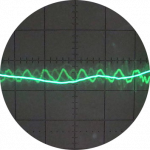Fitting heat pump plumbing and pipes in advance?
I'd like to prepare for a heat pump while our bathroom is being refitted and I have access to the space under the floorboards. There's a convenient route from the hot water tank to the outside wall, right above where we'd like to put the heat pump. However in a few weeks the bathroom will have a new floor, and the only way to access that space will be to rip it up or remove the ceiling in the room below.
Could I leave some pipes in that space, ready to be used in a year or two? Or some conduit to make it easier to feed pipes through? Or will an installer be able to push pipes in from the end if I can mark the right spot? It's about a 3 meter run, parallel to the joists.
Is there anything else I could do while I have the chance? For example is there any need for wires (for example) to the hot water tank thermostat or the house's thermostat?
Definitely try to fit the pipework now, pushing it through conduit isn't likely to be very practical unless its large conduit without bends.
Can I ask some questions:
1. Are you also planning on running your heating from the heat pump
2. Where do you plan for the central heating feed/return pipes and the DHW feed/return pipes to converge (at which point there will be a diverter valve). This could be at the DHW tank (a common arrangement) or somewhere else convenient. Its normally indoors or in an 'outside/inside' space like a garage/plant room. Pipes from the ASHP run to that point and then feed/returns to DHW/Space heating tee off. This is probably determined by your existing pipework.
3. Do you know the heating load/ASHP capacity
4. What existing DHW tank do you have (vented/unvented, HP compatible or not, how is it heated?)
With the answers to these questions its possible to give a more precise response.
4kW peak of solar PV since 2011; EV and a 1930s house which has been partially renovated to improve its efficiency. 7kW Vaillant heat pump.
It would be a straight run, I'm just not sure about the pipe sizes and whether they'd need to be insulated.
Yes, it's for heating and hot water.
I'd assumed that the HP pipes would just connect to my existing system where the boiler pipes go now. The boiler, hot water tank and a couple of motorised valves are all in an airing cupboard next to the bathroom. There's a red expansion vessel (for the heating circuit) in the attic above, along with a cold water tank. I think that makes it a vented system.
I wouldn't know what makes a hot water tank HP compatible, but it's about 15 years old.
We have a 15kW boiler (12 year old Worcester Greenstar), which our gas guy thinks is woefully undersized for a 6 bed house with 20 radiators and solid walls, but he wasn't willing to fit anything bigger as we have an aga, a gas hob and (had) a 25kW combi boiler in our annex, all on the same gas supply. My attempt at modelling the house in Heat Punk put the heat load at about 15kW, but even on the coldest days of the year, the boiler is on about half the time. Checking the Octopus app, we used 213kWh of gas on the coldest days of last January, so that's about 9kW.
Does that help?
Posted by: @robinbennettThe boiler, hot water tank and a couple of motorised valves are all in an airing cupboard next to the bathroom. There's a red expansion vessel (for the heating circuit) in the attic above, along with a cold water tank. I think that makes it a vented system.
OK so it sounds like you have
- a vented DHW system
- all the heating pipes converging in the airing cupboard
You are almost certainly going to want to/be forced to change the DHW tank to an unvented heat pump tank (there are other solutions but few installers can be bothered). This means you will need a discharge pipe from the new unvented DHW tank to a safe place on the outside or a drain, and there are pretty strict rules about the run. You need to consider this also. Look up 'D2 discharge' for more details.
Given the uncertainty in sizing expect the run around from installers, with some wanting to sell you wholly unsuitable oversized kit (eg - my house is measured at 7kW, the standard MCS assumptions say 10.5kW, one installer tried to sell me 2*16kW and several wanted to sell me 1*16kW).
Assuming
- it is in reality less than 16kW but definitely more than 9
- your pipework to emitters is suitable for reuse
- All your pipework currently converges at the airing cupboard
I would be tempted to pre-install the following if they cant be conveniently installed post refurb
- 32mm insulated feed and return for heating (28mm may suffice but for certainty id install 32mm)
- if there is any doubt over the existing mains water feed, a 22mm mains feed (many installers seem to insist on 22mm, 15mm and good pressure/short run will do, but if there is any doubt pre-install 22mm)
- the D2 vent
I would take copious photographs to convince any prospective installer they are good, particularly in relation to the D2 which they will be very twitchy about. I would also pressure test!
In terms of electrical connections, presumably the immersion is already connected. There will be a connection between the heat pump outdoor unit and the heat pump control, which may well be sited in the cupboard. This is often a 2 wire bus (modbus or ebus). There will also be a connection from the controller or the heat pump to the temperature sensor in the tank. You may need a connection to the outdoor temperature sensor or it may be wireless.
Alternatively if the heat pump control is elsewhere you will need the feed to the diverter valve and the connection for the DHW temperature sensor from its location to the airing cupboard.
Just to further complicate things some heat pumps want to 'control' the immersion (for the legionella sterilisation cycle) and require that the power (or a switch for the power) is routed through the heat pump or the heat pump controller. You may need to provision for that. I would guess that most can control a relay rather than switching the actual immersion power feed, but dont know for certain. At least one manufacturer (Vaillant) doesn't require this, completely ignores the immersion, and does the legionella run 'natively' (ie using the actual heat pump). This is possible with the latest high temp refrigerant (R290).
Cabling is an easier retrofit than plumbing so if this can be left and put in later then leave it, otherwise Id install 2, perhaps 3, 0.75mm twin core or equivalent (2*3 core will probably do).
If the heat pump control is in the airing cupboard you will (probably) need power, not a lot, 50W or so (<<1A)
Note that some heat pump controllers have a room temperature sensor built in and in that case you may want to locate it elsewhere. Many feature separate temperature sensors (often wireless) and of course arguably you dont need a room temperature sensor at all because it runs on WC.
Others may have additional suggestions. It would help focus if you could advise whether wiring is likely also to be a problem as a retrofit or only plumbing. If its only the plumbing then focus on that because its simpler!
Hope that helps
4kW peak of solar PV since 2011; EV and a 1930s house which has been partially renovated to improve its efficiency. 7kW Vaillant heat pump.
Fantastic, that's exactly the sort of information I wanted.
Presumably 32mm pipe is the stuff that's sold as '35mm outside diameter'? Oddly enough I've just taken a load of that out. It was used as the waste pipe from the old bath and basin, and had (what looked like) brass bends that had corroded to the point where they leaked. Goodness knows how old that was.
What sort of insulation would you recommend? Just the regular grey B&Q stuff?
Do I drill large enough holes in the wall to fit the insulation, or just the pipes?
Will the installers still be able to solder to the pipes if they're insulated?
Presumably the D2 goes from the hot water tank to outside, not to the HP? Could that be handled like the condensate drain from the boiler, which currently goes into the porch gutter?
The bit about the water mains feed is good to know. It's all 15mm at the moment, but I could upgrade the bit that goes under the bathroom floor pretty easily now. Some of the rest of it will be a nightmare to upgrade, and it's at least 25 meters just from where it enters the house to the hot water tank. Presumably this is a feed to the hot water tank, not the heat pump?
I don't think wiring is going to be a big problem. Assuming that the HP will need it's own connection to the consumer unit, it won't be running under this floor. I can run the wires you suggest, and maybe a piece of rope that could be used to pull more through.
In my personal experience of all things engineering no matter how carefully you try to think of everything that the future installation might need you could miss something.
Our worst day in January 24 used 188kWh and our heat loss (done several ways and agreed with our installer) was 8kW. So you could easily need ~10-12kW. There’s too many unknowns to be certain of putting everything you might need under the floor.
I’d play safe and put a cheap temporary floor down on your new bathroom so it doesn’t seem tragic if it has to come up after all.
2kW + Growatt & 4kW +Sunnyboy PV on south-facing roof Solar thermal. 9.5kWh Givenergy battery with AC3. MVHR. Vaillant 7kW ASHP (very pleased with it) open system operating on WC
That's a very good point. As a software engineer of 30+ years I can see so many ways this could go wrong - but it doesn't cost a lot to try.
Posted by: @judithIn my personal experience of all things engineering no matter how carefully you try to think of everything that the future installation might need you could miss something.
.. I’d play safe and put a cheap temporary floor down on your new bathroom so it doesn’t seem tragic if it has to come up after all.
I wouldnt disagree with this!
Posted by: @robinbennettPresumably 32mm pipe is the stuff that's sold as '35mm outside diameter'? Oddly enough I've just taken a load of that out. It was used as the waste pipe from the old bath and basin, and had (what looked like) brass bends that had corroded to the point where they leaked. Goodness knows how old that was.
No. The pipe is carrying pressurised hot water (it could be as hot as 70C in a legionella cycle) so it needs to be suitable for this. Copper is the normal choice, but there is plastic pipe suitable for pressurised hot water available however it has a thick wall so you may need the next size up. Play safe, use copper.
Posted by: @robinbennettWhat sort of insulation would you recommend? Just the regular grey B&Q stuff?
Inside the heated envelope thats sufficient, make sure you insulate bends etc. Outside the heated envelope you need something better.
Posted by: @robinbennettDo I drill large enough holes in the wall to fit the insulation, or just the pipes?
Ideally the former and certainly the former for any external wall penetration. The hole should ideally be sleeved to prevent collapse, I cant really advise on what use but ive seen it done with drainpipe.
Posted by: @robinbennettPresumably the D2 goes from the hot water tank to outside, not to the HP? Could that be handled like the condensate drain from the boiler, which currently goes into the porch gutter?
It goes from the water tank to a safe discharge location, which can be outside (suitably protected) or can be the foul drain if you have suitable pipework. It needs to have a continuous fall and there are rules about sizing, material (which must be suitable for boiling water) and termination. The continuous fall is, so far as I can see, incompatible with running perpendicular to the joist direction because you fall foul of the notching/piercing rules - not that everyone takes notice of these! The pipe is a safety feature for UVCs, releasing steam and water should they overheat and boil, the requirement for which, together with the recommended approach, is set out in building regulations. As a result plumbers can get very particular about this (they have to sign off that its safe, so they are arguably accepting liability should the tank explode or someone get scalded).
If you are going to do it in advance you do need to read up and ensure you can prove that you conform otherwise you run the risk that the plumber will simply reject it (TBH you run this risk anyway).
Alternatively make the UVC switch part of your bathroom upgrade (which may anyway be sensible to ensure fittings are compatible). Just make sure you get a 'heat pump compatible' cylinder - basically one with a coil surface area of at least 3 sq m. Again there is a risk that the installer will reject it but if its got at least 3 sq m surface area and a pocket for the temperature sensor you can simply reject any installers that do reject it on the grounds that they cant think out of the box sufficiently well to do a good installation.
There are three downsides to this latter approach
1. You will pay VAT on the cylinder (but that may be a small price to pay).
2. It rules out using a cylinder which is pre-plumbed for a heat pump. Many installers love these because it makes the plumbing fool-proof, which of course begs the question of whether you want to use an installer that needs to make the plumbing fool proof.
3. Because the cylinder is already in place, the HP installer will have to 'work around' it. You need to be certain that they can access the feed(s) and return(s) to the space heating!
The upside is that you get better secondary cold and hot water earlier (for me, the switch from indirect to direct has made a real difference to the quality of the experience and eliminated two very noisy pumps, I could live with it as it was, but definitely prefer it as it now is!).
Posted by: @robinbennettThe bit about the water mains feed is good to know. It's all 15mm at the moment, but I could upgrade the bit that goes under the bathroom floor pretty easily now. Some of the rest of it will be a nightmare to upgrade, and it's at least 25 meters just from where it enters the house to the hot water tank. Presumably this is a feed to the hot water tank, not the heat pump?
The pipe feeds both the DHW tank and any cold water outlets previously fed from the loft tank (the 'indirect' cold water). The reason for 22mm is simply flow rate. If your water pressure is low, then a 25m run of 15mm (plus the onward pipework) may well reduce the flow rate to a figure too low to give eg a good shower or to run two outlets simultaneously. Many installers will just say 'it must be upgraded' - and they may be right - if you can somehow test the flow rate from the cold feed at or near the DHW tank you can find out for yourself. In my case I didn't bother upgrading the 15mm feed because the run from the house entry is only ~15m and the mains pressure is about 9 bar, so there is plenty of flow. You may not be so lucky.
This is, IMHO, another reason to consider making the switch of the cylinder part of the bathroom project.
Posted by: @robinbennettI don't think wiring is going to be a big problem. Assuming that the HP will need it's own connection to the consumer unit, it won't be running under this floor. I can run the wires you suggest, and maybe a piece of rope that could be used to pull more through.
So as previously stated you will need mains to the HP and HP controller (the latter probably in or near the airing cupboard). You will need at least 1 and possibly more cable(s) from the control unit to the HP. You will need the sensor cable from DHW tank to control unit. If you can work out how to do these routes you should be OK. If you plan on 'pulling through' I would fit conduit!
4kW peak of solar PV since 2011; EV and a 1930s house which has been partially renovated to improve its efficiency. 7kW Vaillant heat pump.
> Play safe, use copper.
Just to be clear, our old bath waste pipe was copper, about 35mm OD and 32mm ID, probably from around 1950. I was just querying it because when I looked at plumbing supplies, I couldn't see any listed as 32mm, only 35mm
Copper Tube - 35mm x 3m - 13595
Wednesbury Plain Copper Tube Length 35mmx3m (Table X) X035L-3
I heard somewhere that 'tube' is measured ID, while 'pipe' uses ID and just wanted to check it was the same thing.
I'll try to clarify the situation for the D2 drain. The airing cupboard is on an outside wall, above our porch and next to some patio doors (yes, it's an unusual old house!) so there's nowhere for a heat pump directly below it. Instead we plan the put the pump around the corner, and would rather run pipes under the floor rather than around the outside. I don't think the D2 needs to be follow the same route. Can the D2 just go through the wall in the airing cupboard, and discharge into the gutter of the porch roof, like the old boiler condensate pipe? (the rain water goes into the foul drain, again probably 1950's plumbing)
Posted by: @robinbennettJust to be clear, our old bath waste pipe was copper, about 35mm OD and 32mm ID, probably from around 1950. I was just querying it because when I looked at plumbing supplies, I couldn't see any listed as 32mm, only 35mm
Copper Tube - 35mm x 3m - 13595
Wednesbury Plain Copper Tube Length 35mmx3m (Table X) X035L-3
I heard somewhere that 'tube' is measured ID, while 'pipe' uses ID and just wanted to check it was the same thing.
You are right about 35mm, my mistake.
Posted by: @robinbennettI'll try to clarify the situation for the D2 drain. The airing cupboard is on an outside wall, above our porch and next to some patio doors (yes, it's an unusual old house!) so there's nowhere for a heat pump directly below it. Instead we plan the put the pump around the corner, and would rather run pipes under the floor rather than around the outside. I don't think the D2 needs to be follow the same route. Can the D2 just go through the wall in the airing cupboard, and discharge into the gutter of the porch roof, like the old boiler condensate pipe? (the rain water goes into the foul drain, again probably 1950's plumbing)
The D2 can certainly go through the wall assuming that the porch doesn't conflict given the levels (look at the diagram of a discharge to understand) and of course it doesnt have to follow the same route. I think many will say you cant discharge directly into a gutter, and you certainly cannot discharge directly into a plastic gutter. I think discharge into a metal hopper (if there is one) is probably acceptable, but again others may disagree. You are talking steam and boiling water so safety is paramount.
Some argue that it cant discharge onto a flat roof because the roof material might be damaged. Given that the discharge rarely if ever occurs, and most flat roof coverings are torched on, I personally struggle with this argument! There is scope for interpretation and of course different plumbers do have subtly different interpretations. That would be the advantage of doing the UVC at the same time as the bathroom refurb, when the HP man comes he isn't touching it so doesn't need a say.
The most common ;#'recognised' discharge points are just above ground level with a protective mesh to stop people putting their hands under it, and into a suitable foul drainage system. The rules on length can get quite restrictive if you need more than a couple of bends, possibly forcing you to 28mm rather than 22mm. You really do need to research this if you are doing it in advance. On the other hand, perhaps you dont need to. Since it can (subject to levels) go out through the wall the HP installer can fit it without involving the bathroom.
4kW peak of solar PV since 2011; EV and a 1930s house which has been partially renovated to improve its efficiency. 7kW Vaillant heat pump.
One more thought if you are doing a bathroom refurb and planning a heat pump later - towel rails are basically more or less useless for heating when run at the low temperatures heat pumps work at. You may want to address this up front. Solutions include - fit an electric element in addition, use a standard radiator instead (for example a narrow but tall one), ignore and rely on heat from adjacent room and steam when the bath is in use.
Regarding feed and return pipe sizing this cheat sheet gives you the numbers, you may wish to take a view.
https://www.heatgeek.com/does-my-pipework-need-upgrading-for-a-heat-pump-with-cheat-sheet/
4kW peak of solar PV since 2011; EV and a 1930s house which has been partially renovated to improve its efficiency. 7kW Vaillant heat pump.
Thanks, we're planning on a large normal radiator. Heat Punk suggests that we need a 1800x600mm K2 radiator for a 45 degree flow temperature, but it's possible I've done it wrong! It's a 2x2.5m room with two outside solid brick walls, and I'm adding 70mm of PIR. I'm assuming that a TRV will prevent the room overheating while we insulate and upgrade the radiators in the rest of the house.
I had been considering turning the old 35mm copper pipe into a heated towel rail. If I do, it sounds like I should just use an electric element and not connect it to the heating.
- 26 Forums
- 2,342 Topics
- 53 K Posts
- 286 Online
- 6,000 Members
Join Us!
Worth Watching
Latest Posts
-
RE: Controlling Daikin Altherma via P1P2 and Home Assistant
@majordennisbloodnok That’s correct. I can’t find anywh...
By weoleyric , 16 minutes ago
-
RE: Octopus Cosy Heat Pump Owners & Discussion Thread
@andrewj yeah we recreated it. Engineer seemed to think...
By swwils , 1 hour ago
-
A while back I had a Y strainer fitted on the external ...
By jeegnesh , 2 hours ago
-

RE: Free Ecoheat Heat Pump Install
This is an interesting way of looking at it, and I can ...
By Mars , 4 hours ago
-

RE: Configuring third party dongle for Ecodan local control
That's a good spot and a valuable insight, @sheriff-fat...
By Majordennisbloodnok , 4 hours ago
-

RE: Are We Sleepwalking Into Another Race to the Bottom?
@majordennisbloodnok And did ‘Honey’ order it for you? ...
By Toodles , 4 hours ago
-

RE: Setback savings - fact or fiction?
@robs — thanks again for your detailed comments. Some r...
By cathodeRay , 18 hours ago
-

RE: A Smarter Smart Controller from Homely?
@papahuhu I hope you get a swift resolution. Regards, T...
By Toodles , 21 hours ago
-

RE: Poll for Time of Use, tariffs, technology
That’s fine by me too Major, I feel it is a sad reflect...
By Toodles , 23 hours ago
-

Bingo. Sometimes a judiciously placed size 10 bovver bo...
By Majordennisbloodnok , 23 hours ago
-
RE: Mitsubishi Ecodan 11.2kW heat pump with low COP
@ciocoiu-alexandru I can't provide the same level of di...
By Sheriff Fatman , 24 hours ago
-

The three technical issues I'm considering are: BMS...
By Transparent , 1 day ago
-
RE: LiFePO4 lithium battery fires and explosions
@transparent Your post may fit better in th...
By Batpred , 1 day ago
-

RE: British Gas vs Octopus Energy vs Heat Geek vs EDF vs Aira vs OVO vs EON.Next vs Boxt
@jamespawhite, if you could be bothered, you could also...
By Mars , 1 day ago
-
RE: Commencing on an ASHP Installation Process
I've got a bit of time to draft something today, so the...
By Sheriff Fatman , 2 days ago
-
RE: Help with heat pump sizing
@amin I dont think materially relative to t...
By JamesPa , 2 days ago
-

@majordennisbloodnok I have decided to take the plunge....
By TechnoGeek , 2 days ago
-
RE: Different dT on each radiator?
I cant sorry. Its based on some calculations I did fro...
By JamesPa , 3 days ago



